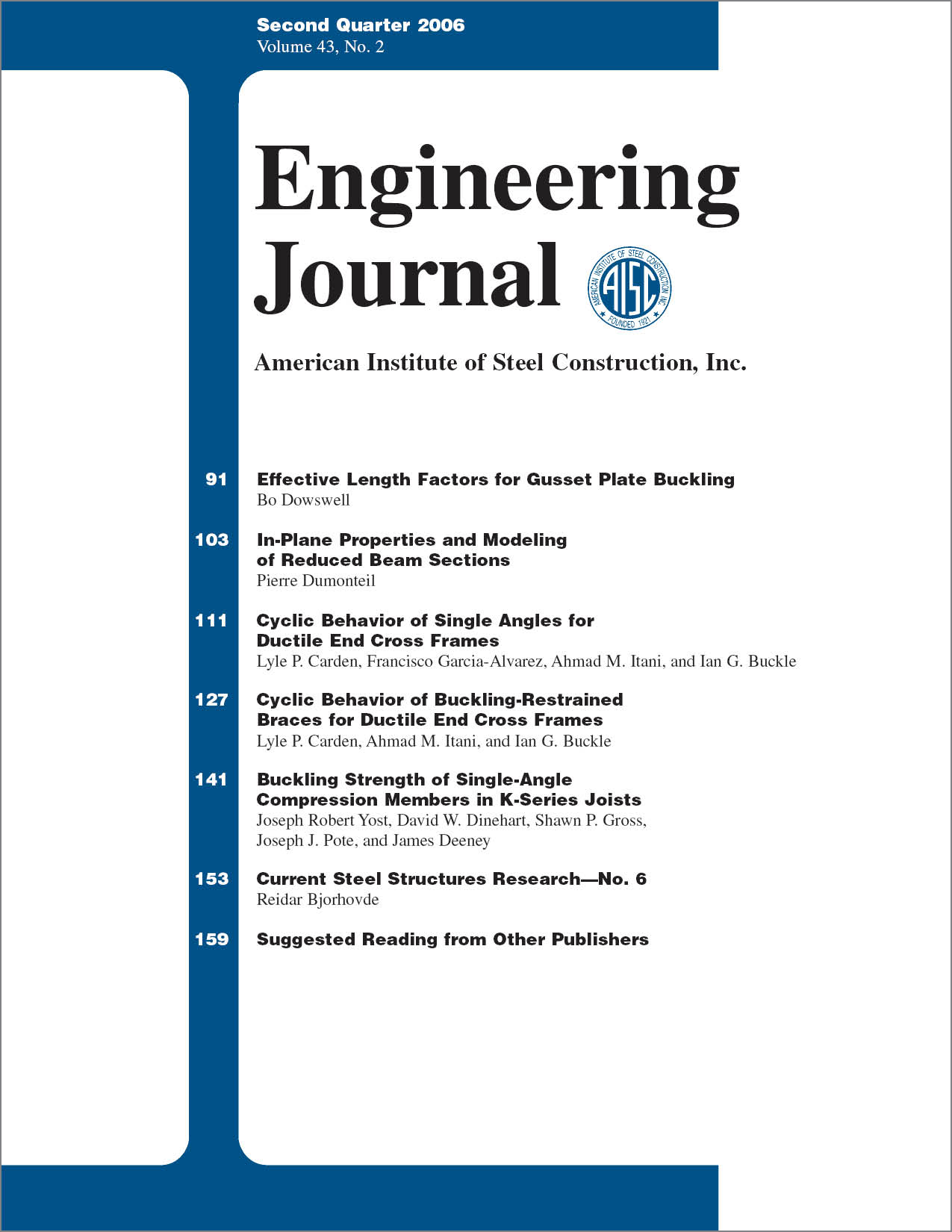Cyclic Behavior of Single Angles for Ductile End Cross Frames
DOI:
https://doi.org/10.62913/engj.v43i2.875Keywords:
Stability and Bracing, Seismic Design, Bridges,Abstract
The cyclic inelastic behavior of single angle braces used in bridge cross frames is described in this paper. Based on the results from experiments, it is shown that steel angles can be designed to achieve a ductile response with large inelastic strains prior to failure under cyclic loading. Preventing fracture in the connections as well as satisfying limiting b/t and Kl/r ratios results in good cyclic behavior and maximum cyclic strains greater than 6%. The tensile yield force for the single angles can be confidently predicted. The buckling capacity is shown to be largely dependent on the effective length of the members which, in turn, is dependent on the type of end condition. Where plastic hinging is expected in the gusset plates an effective length factor of 1.0 can be assumed for the member, while if plastic hinging is expected in the member an effective length factor of 0.7 is appropriate, where the length is defined as the distance between the centroids of the connections. It is recommended that Kl/r for single angles in end cross frames of bridges be limited to 120 to preclude the use of slender members for which the buckling strength is sensitive to effective length. By limiting the slenderness ratio to 120, the members are treated like main members for seismic loads based on AASHTO provisions. The b/t ratio should be limited to those specified for special concentrically braced frames from the AISC Seismic Provisions for Structural Steel Buildings. An analytical model was developed to simulate the nonlinear response of the single angles and a simplified bilinear model was developed for design purposes.

